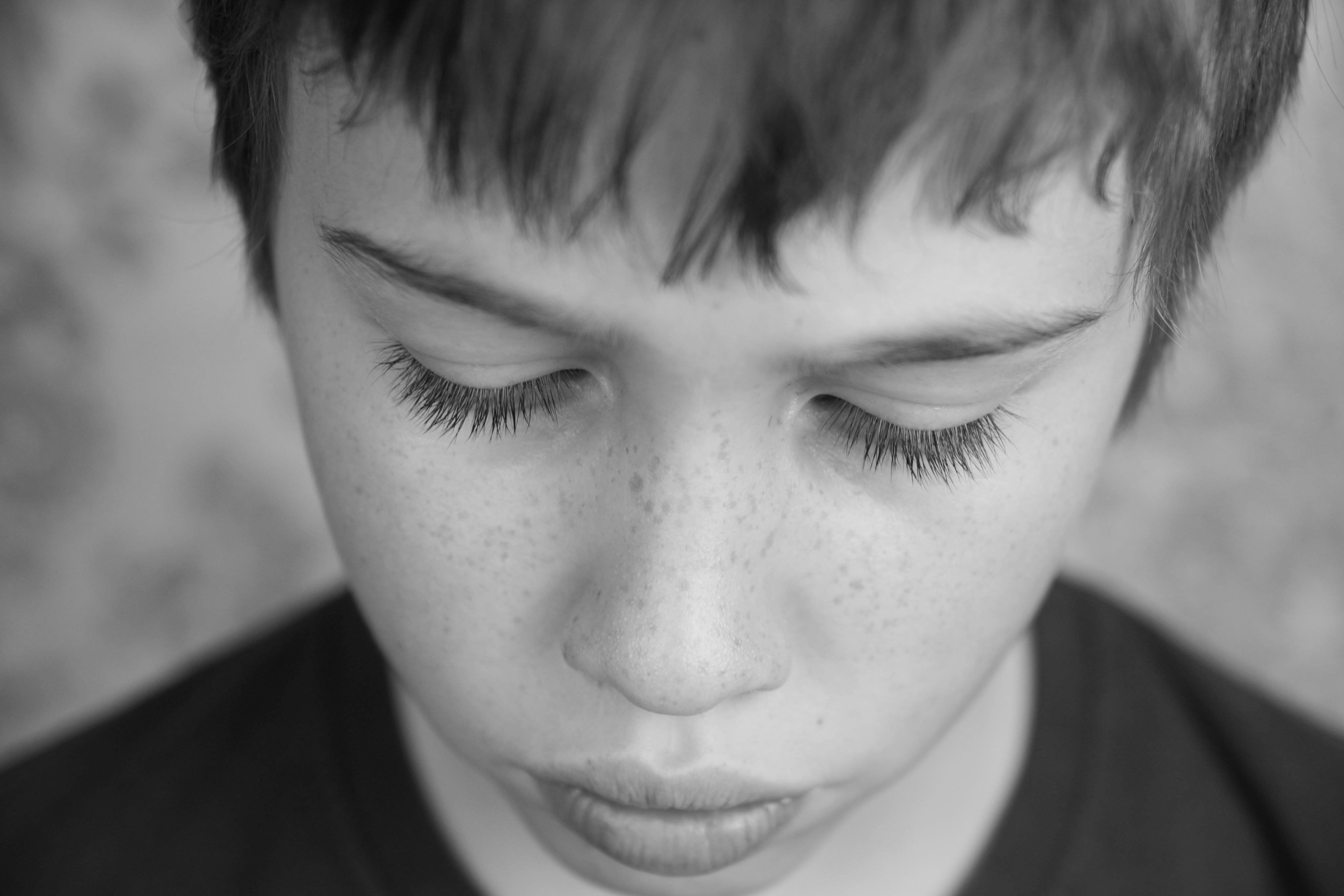


Anxiety can show up in countless ways and many children slip under the radar, go untreated, and are often misunderstood by their parents,
teachers and peers. Anxiety disorder can be misunderstood as behavioural issues, cause discomfort, poor academic performance and
feelings of inadequacy and unhappiness.
Anxiety has a way of making people feel like they have no control. It’s inexplicable and feels as though it comes out of nowhere. Not only can anxiety take its toll mentally but it is also manfested in physical symptoms. Anxiety may cause your child to suffer from stomach aches and headaches, have difficulty falling asleep or become overly emotional. Explaining to your kids how anxiety works will disparage what they’re going through and take away some of the punch. It's powerful.
In many ways, anxiety has similar effects in adults and children alike but there are a few tell-tale phrases that can indicate your child is anxious.
1. I don't want to go to school
Refusal to go to school can come from a variety of reasons including difficulty with learning, difficulty with concentrating, difficulty with making friends and bullying. It is important to understand and address the issues in order to work out the best strategy to help them.
A whole team approach between parents, the school team and professionals involved can give the best outcome for a child who doesn’t want to go to school.
2. I feel sick
When anxiety strikes, it shows up in many different ways. Some are physically obvious, others are not.
Children struggling with anxiety may often complain of a sore tummy or feeling sick in the stomach. Some children will also fake sickness and do anything possible to prove to parents that they are truly sick and can’t go to school or can’t do something.
3. I don't want to...I'm tired
Anxious thoughts can wear them down and also bring on sleep disturbance which in turn results in increased tiredness. Children often find it hard to get to sleep because they are thinking about the day, thinking what went wrong, thinking about how to solve what didn’t go well and worrying how they will tackle the day tomorrow.
For both adults and children, symptoms of anxiety can include:
The best thing you can do for your child and teach them strategies to cope with anxiety. Learning to manage symptoms and cope with triggers takes time and practice. Beyond Blue have outlined 10 strategies to try with your child.
1. Start by slowing down
Encourage your child to take some slow, deep breaths to calm the physical effects of anxiety. Practice together by breathing in for three
seconds, holding for three seconds, then out for three. Once they're feeling a bit calmer, you can talk through what's worrying them.
2. Make time to worry
Setting aside some designated time to deal with worries can stop anxious thoughts from taking over. Try creating a daily ritual called
‘worry time’, and encourage children to draw or write down whatever’s bothering them. You can make the activity a bit more fun by decorating
a ‘worry box’ or building a ‘worry wall’ out of post-its. When the time is up – after 10 to 15 minutes – shut the worries up in the box or
tear them off the wall and say goodbye to them for the day.
3. Climb that ladder
Instead of skirting the scary situation, you could try a technique called ‘laddering’ – breaking down worries into manageable chunks and
gradually working towards a goal.
4. Encourage positive thinking
Kids with anxiety often get stuck on the worst-case scenario or 'what ifs' in any situation. You can help them shift these thinking patterns
by:
5. Have a go
Anxious kids often worry about making mistakes or not having things perfect. This can lead to them avoiding situations or activities –
they’d rather sit out than get it wrong. Emphasise giving new things a try and having fun over whether something’s a success or failure.
6. Model helpful coping
Don’t just tell your child how to overcome emotions – show them. When you get anxious or stressed, verbalise how you’re coping with the
situation: “This looks a bit scary, but I’ll give it a go.” And hey, you might even knock off one of your own fears.
7. Help your child take charge
Think about what you can do to make your child feel like they have some control over the scary situation. For example, if your child gets
anxious about intruders, make shutting and locking their bedroom window part of their night-time responsibilities.
8. Be upfront about scary stuff
Lots of kids have worries about death, war, terrorism or things they see on the news. This is all really normal. Talk through their fears
and answer any questions truthfully. Don’t sugar-coat the facts – try and explain what’s happening in a way that puts their fears in
perspective.
9. Be BRAVE
Check out BRAVE – a free online program to help kids cope with worries and anxiety. There’s a
tailored version for younger kids (eight-12), one for teens (12-17) and an accompanying program for parents.
10. And finally, check your own behaviour
Kids pick up all sorts of signals from the adults in their lives, so have a think about the messages you’re sending. Over-protective family
members can inadvertently reinforce children’s fears that the world is a dangerous place where everything can hurt you. Similarly, parents
who ‘over-help’ are subconsciously telling their kids that they can’t do anything without adult support. If you’re prone to
‘helicoptering’, try taking a step back and waiting next time before you jump in. It can be hard seeing your child distressed, but figuring
things out for themselves is an important step in building resilience.
Anxiety in a child can impact everyone around them. It affects not only the child but the parents, siblings and the teachers who also invest
in the children in their care. One of the worst things about anxiety is the way it tends to show up without notice or a good reason. For
kids (or anyone) who struggles with anxiety, it can feel like a speedball – it comes out of nowhere, makes no sense and has a mind of
its own. The truth is, the mind that anxiety has is theirs, and when they can understand their own power, they can start to establish
themselves firmly as the ‘boss of their brain’. Understanding this will empower them, and will help them to draw on the strength, wisdom
and courage that has been in them all along.
Childhood anxiety can feel overwhelming for both the child and the parent, but it is treatable. If your child’s anxiety is pervasive and negatively affecting their ability to sleep, attend school, and other areas of her life, seek an evaluation from a licensed mental health practitioner.